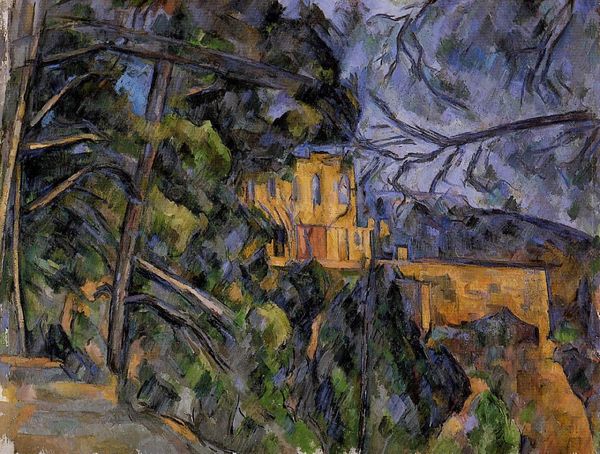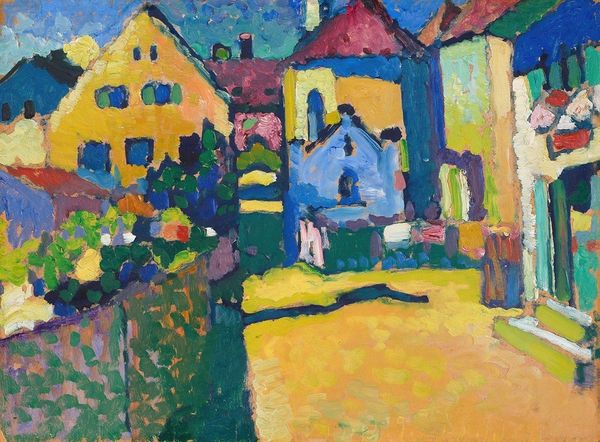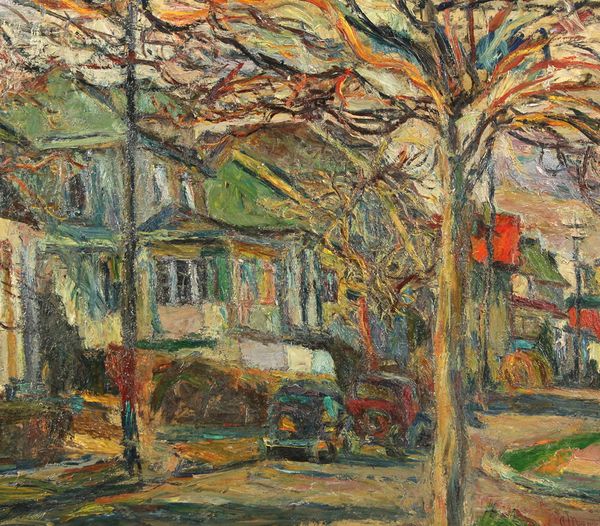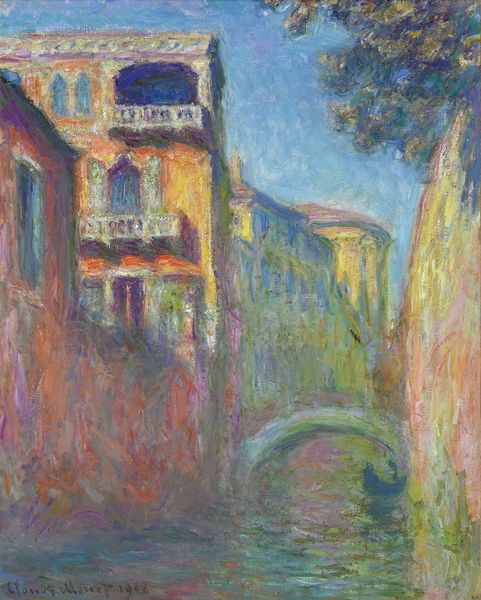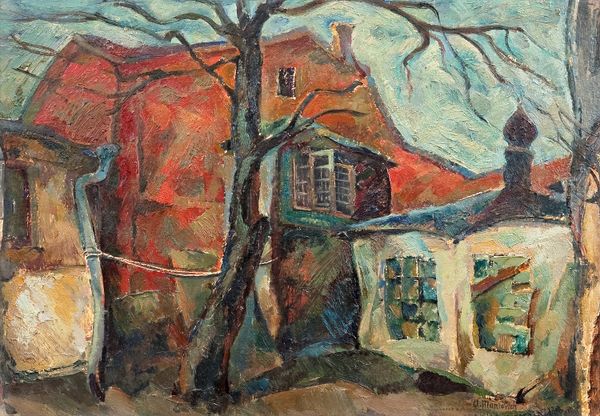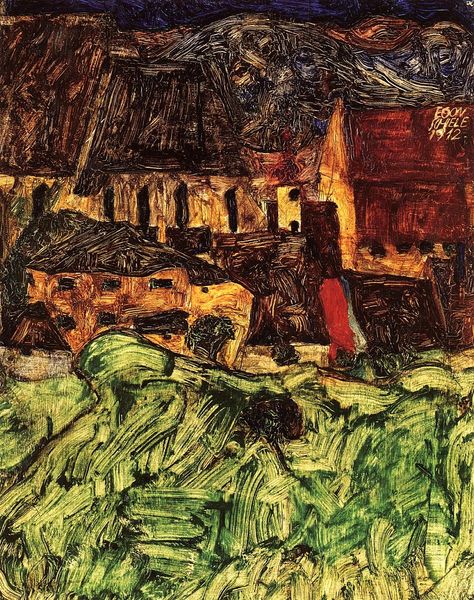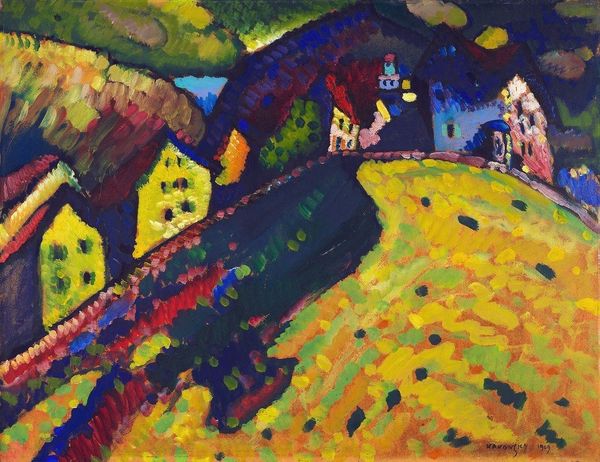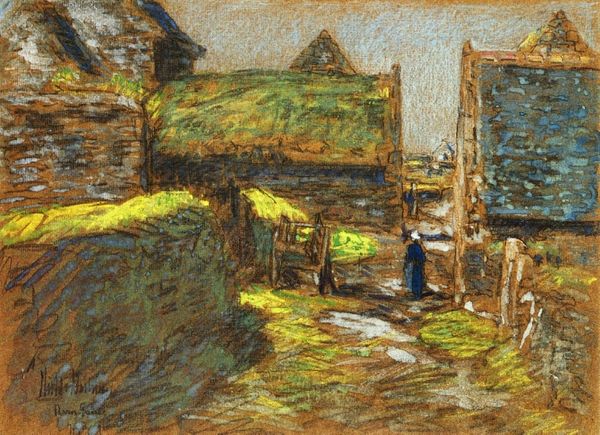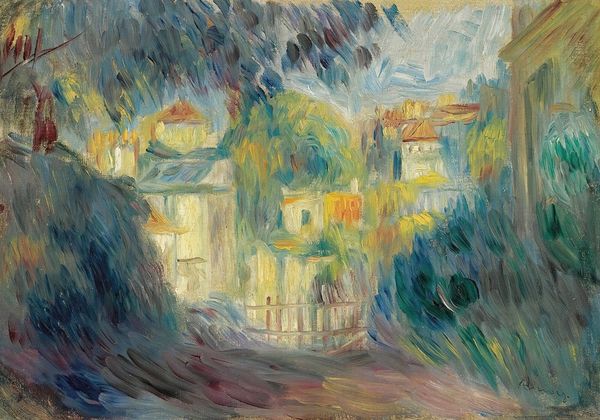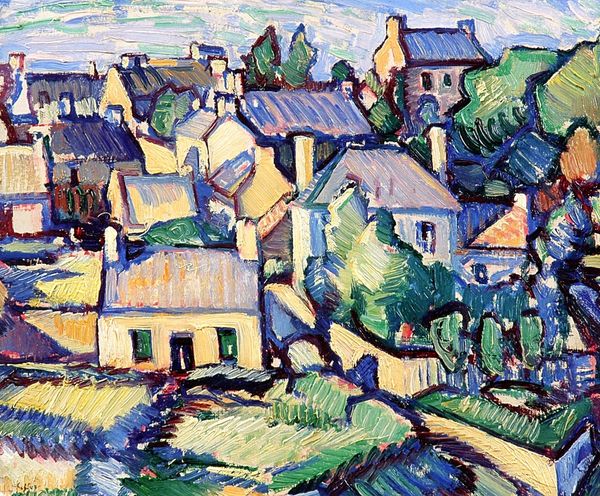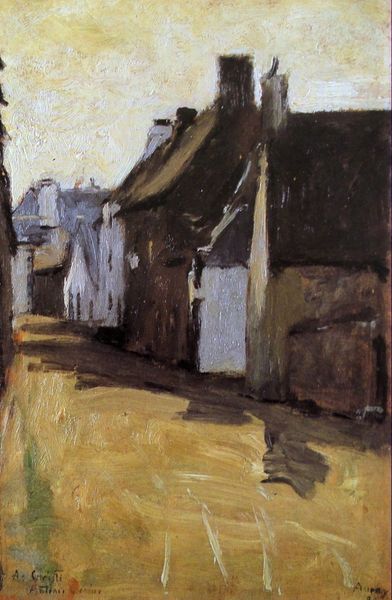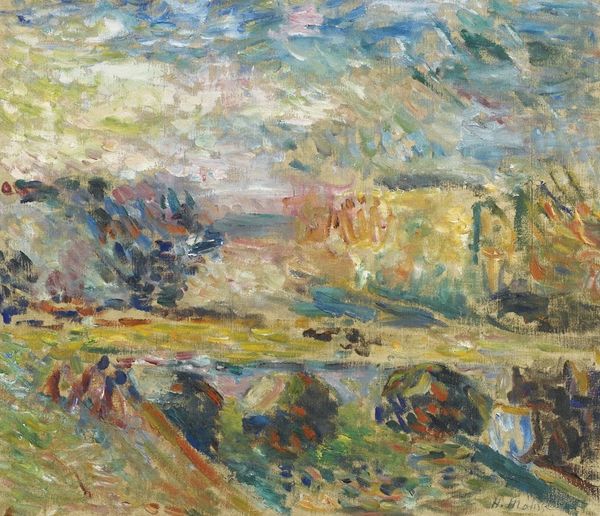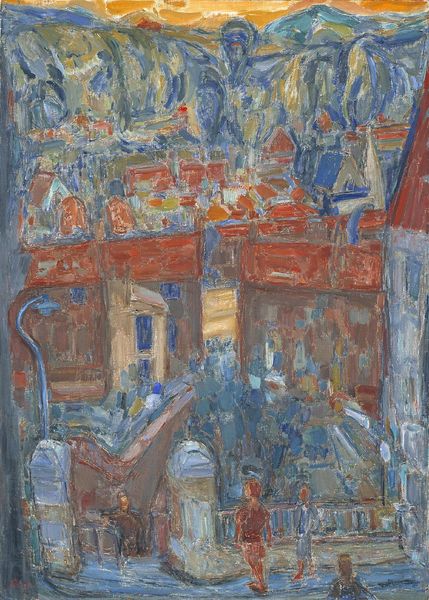
Dimensions: overall: 45.7 x 33.6 cm (18 x 13 1/4 in.) framed: 66 x 67 x 7.6 cm (26 x 26 3/8 x 3 in.)
Copyright: National Gallery of Art: CC0 1.0
Maurice Utrillo created Rue Cortot, Montmartre around 1909, using oil paint on canvas. The thick application of paint is immediately evident. Utrillo’s technique involves building up layers of impasto, creating a textured surface that almost feels sculptural. If you look closely, you’ll notice how the material itself defines the image. The heavy brushstrokes capture the rough, uneven surfaces of the buildings and the street. The colors are muted, earthy tones – whites, grays, greens and browns – reflecting the gritty urban environment. This wasn’t about portraying idealized beauty. Instead, Utrillo seemed interested in the everyday reality of Montmartre. This approach relates to the social context of the time. While many artists focused on grand subjects, Utrillo found his subject matter in the working-class neighborhoods of Paris. The materiality of his paintings – the rough texture, the subdued palette – speaks to the hardscrabble existence of the people who lived there. It reminds us that art can be found in the most humble of places. It's not just about skill; it's about bringing something new to the practice of painting.
Comments
No comments
Be the first to comment and join the conversation on the ultimate creative platform.
